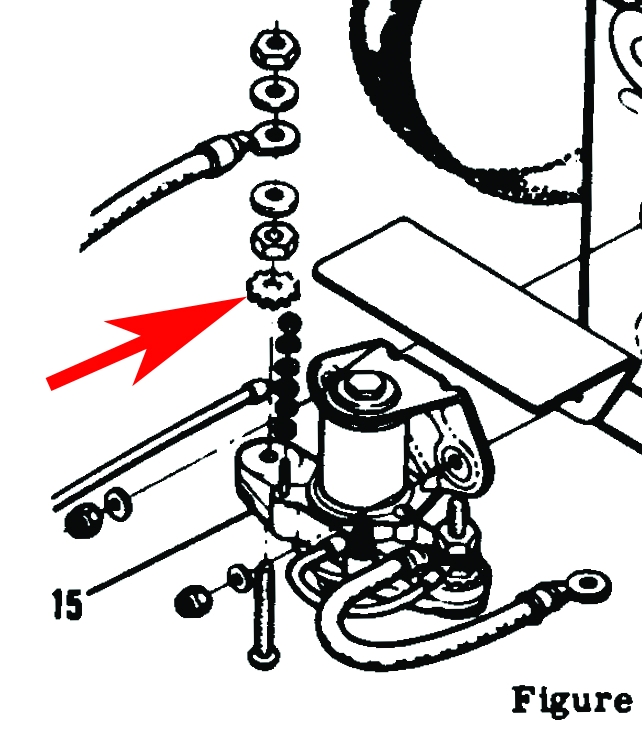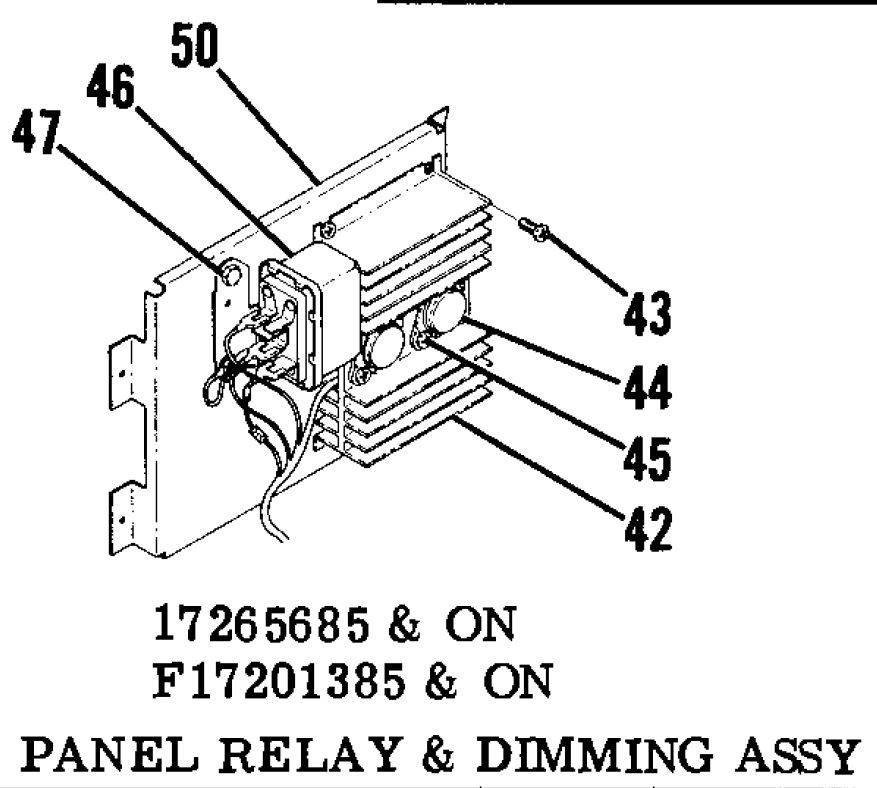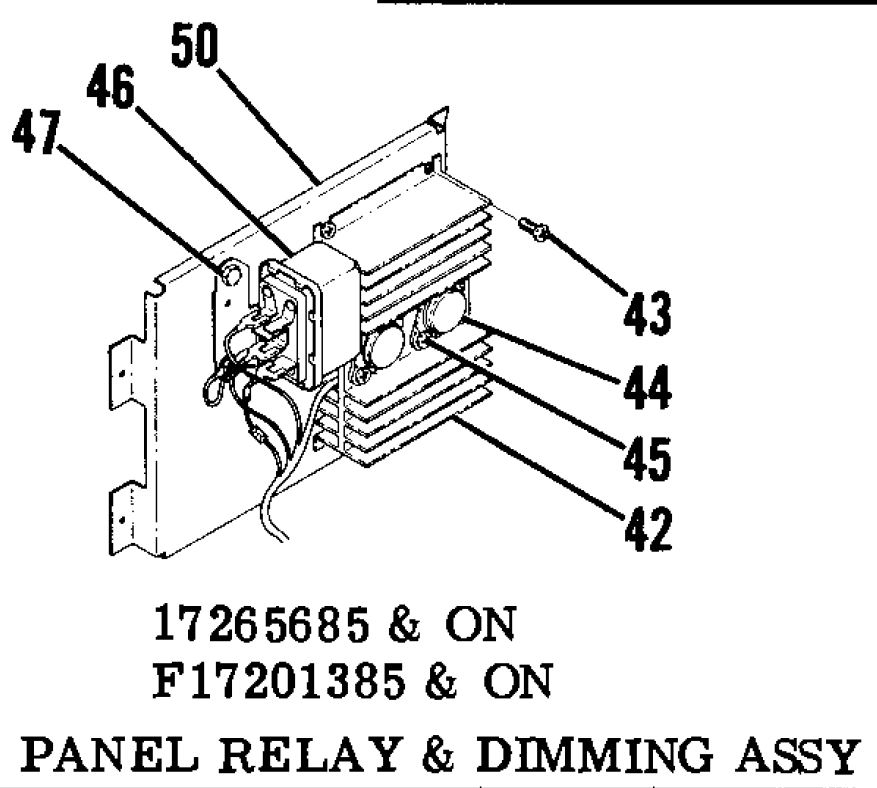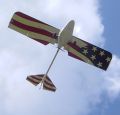 |
Matronics Email Lists
Web Forum Interface to the Matronics Email Lists
|
| View previous topic :: View next topic |
| Author |
Message |
kenryan
Joined: 20 Oct 2009
Posts: 426
|
 Posted: Thu Dec 13, 2018 1:22 pm Post subject: star washers Posted: Thu Dec 13, 2018 1:22 pm Post subject: star washers |
 |
|
Bob,
In the recent weeks/months I "think" I saw what appear to me to be contradicting posts regarding the use of star washers.
In one discussion I thought you said that star washers are never used in the current path on any certified airplanes. I think the reason was that they prevent the gas tight seal that will inhibit corrosion.
Then, in a second discussion about bus bar construction using brass bars, I thought you said to be sure to use a star washer under each terminal.
Could you clear up my confusions as to your approach to using star washers in an aircraft electrical system?Â
Thanks,
Ken
| | - The Matronics AeroElectric-List Email Forum - | | | Use the List Feature Navigator to browse the many List utilities available such as the Email Subscriptions page, Archive Search & Download, 7-Day Browse, Chat, FAQ, Photoshare, and much more:
http://www.matronics.com/Navigator?AeroElectric-List |
|
|
|
| Back to top |
|
 |
ashleysc(at)broadstripe.n
Guest
|
 Posted: Thu Dec 13, 2018 10:11 pm Post subject: star washers Posted: Thu Dec 13, 2018 10:11 pm Post subject: star washers |
 |
|
Hi Ken;
I think star washers would make good electrical contact, but I don't like them against aluminum, as they can initiate cracks.
Cheers! Stu.
From: "Ken Ryan" <keninalaska(at)gmail.com>
To: aeroelectric-list(at)matronics.com
Sent: Thursday, December 13, 2018 1:21:13 PM
Subject: star washers
Bob,
In the recent weeks/months I "think" I saw what appear to me to be contradicting posts regarding the use of star washers.
In one discussion I thought you said that star washers are never used in the current path on any certified airplanes. I think the reason was that they prevent the gas tight seal that will inhibit corrosion.
Then, in a second discussion about bus bar construction using brass bars, I thought you said to be sure to use a star washer under each terminal.
Could you clear up my confusions as to your approach to using star washers in an aircraft electrical system?
Thanks,
Ken
| | - The Matronics AeroElectric-List Email Forum - | | | Use the List Feature Navigator to browse the many List utilities available such as the Email Subscriptions page, Archive Search & Download, 7-Day Browse, Chat, FAQ, Photoshare, and much more:
http://www.matronics.com/Navigator?AeroElectric-List |
|
|
|
| Back to top |
|
 |
nuckolls.bob(at)aeroelect
Guest
|
 Posted: Fri Dec 14, 2018 6:54 am Post subject: star washers Posted: Fri Dec 14, 2018 6:54 am Post subject: star washers |
 |
|
At 03:21 PM 12/13/2018, you wrote:
| Quote: | Bob,
In the recent weeks/months I "think" I saw what appear to me to be contradicting posts regarding the use of star washers.
In one discussion I thought you said that star washers are never used in the current path on any certified airplanes. I think the reason was that they prevent the gas tight seal that will inhibit corrosion.
Then, in a second discussion about bus bar construction using brass bars, I thought you said to be sure to use a star washer under each terminal.
Could you clear up my confusions as to your approach to using star washers in an aircraft electrical system?Â
Thanks,
Ken |
I spent a few minutes searching the term
'star washers' in the list archives. Generally,
the use of star washers in the electrical path
was discouraged. If used at all, they were
for mechanical security (i.e. used under a nut).
Couldn't look at all the search hits, but the
few I found were consistent with the above.
Just for grins, I checked a Brand-C parts
catalog for battery contactor installations
and found this image:
[img]cid:.0[/img]
Here we see a lockwasher called out as part
of the assembly. It's used under a nut that
secures a terminal post to the 'wing' of
an H6041 mil-style contactor. It doesn't
have a numerical call-out meaning its not
a cataloged spare part as far as Cessna
is concerned. In fact, it's part of the
contactor assembly as supplied by Cutler-Hammer
(item 15). I'm not sure why the catalog
illustrator chose to explode these parts
off the as-supplied assembly. From an OEM
service manual perspective, there was no
reason to disassemble that stud.
I also found some un-flagged star washers
on vendor-supplied assemblies but in each
case, the washer was under a nut . . . not
part of the current path. As a factory
policy, metal locknuts were the
preferred anti-loosening technology for
threaded fasteners.
Electrical conductor pathways were made
up with flat, clean and sometimes malleable
conductors (crimped terminals) being brought
together in gas-tight union with no
intermediate enhancements. Sometimes a
service manual would call out moisture
proofing by painting the finished joint
with some suitable coating . . . these
were joints located out on structure subject
to moisture incursion by drip, splash
or condensation.
B&C supplies star washers with the firewall
forest-of-tabs ground block. All the circuit
breaker manufacturers supply lock washers under
the heads of their screws for terminal attachment.
Again, these are intended to enhance mechanical
integrity of the fastener outside the current
pathway.
An interesting aside . . .
While cruising through the electrical installation
data I found this image I had forgotten
about . . .
[img]cid:.1[/img]
Somewhere in my archives, I have a letter from
the head-shed of single engine electrical systems
rejecting my proposal for replacing the too-warm,
panel dimming rheostats with a remotely mounted
array of power transistors on heat sinks. This
would have been about 1964 or thereabouts.
He offered a litany of down-sides . . .
A about 5 years later, the same idea cropped up
across town on the light twins . . . a short
time later, solid state dimming migrated into the
single engine airplanes. We COULD have beat
the twin engine line to this enhancement by
several years. Oh well . . .
Bob . . .
| | - The Matronics AeroElectric-List Email Forum - | | | Use the List Feature Navigator to browse the many List utilities available such as the Email Subscriptions page, Archive Search & Download, 7-Day Browse, Chat, FAQ, Photoshare, and much more:
http://www.matronics.com/Navigator?AeroElectric-List |
|
| Description: |
|
| Filesize: |
222.93 KB |
| Viewed: |
5687 Time(s) |

|
| Description: |
|
| Filesize: |
211.06 KB |
| Viewed: |
5687 Time(s) |

|
|
|
| Back to top |
|
 |
kenryan
Joined: 20 Oct 2009
Posts: 426
|
 Posted: Fri Dec 14, 2018 9:01 am Post subject: star washers Posted: Fri Dec 14, 2018 9:01 am Post subject: star washers |
 |
|
Thanks. I now understand how a star washer under the nut is not in the current path (a concept that had eluded me). As an aside, is there any preference as to inside vs outside teeth on the washer?
On Fri, Dec 14, 2018, 06:02 Robert L. Nuckolls, III <nuckolls.bob(at)aeroelectric.com (nuckolls.bob(at)aeroelectric.com) wrote:
| Quote: | At 03:21 PM 12/13/2018, you wrote:
| Quote: | Bob,
In the recent weeks/months I "think" I saw what appear to me to be contradicting posts regarding the use of star washers.
In one discussion I thought you said that star washers are never used in the current path on any certified airplanes. I think the reason was that they prevent the gas tight seal that will inhibit corrosion.
Then, in a second discussion about bus bar construction using brass bars, I thought you said to be sure to use a star washer under each terminal.
Could you clear up my confusions as to your approach to using star washers in an aircraft electrical system?Ã
Thanks,
Ken |
 I spent a few minutes searching the term
 'star washers' in the list archives. Generally,
 the use of star washers in the electrical path
 was discouraged. If used at all, they were
 for mechanical security (i.e. used under a nut).
 Couldn't look at all the search hits, but the
 few I found were consistent with the above.
 Just for grins, I checked a Brand-C parts
 catalog for battery contactor installations
 and found this image:
[img]cid:.0[/img]
 Here we see a lockwasher called out as part
 of the assembly. It's used under a nut that
 secures a terminal post to the 'wing' of
 an H6041 mil-style contactor. It doesn't
 have a numerical call-out meaning its not
 a cataloged spare part as far as Cessna
 is concerned. In fact, it's part of the
 contactor assembly as supplied by Cutler-Hammer
 (item 15). I'm not sure why the catalog
 illustrator chose to explode these parts
 off the as-supplied assembly. From an OEM
 service manual perspective, there was no
 reason to disassemble that stud.
 I also found some un-flagged star washers
 on vendor-supplied assemblies but in each
 case, the washer was under a nut . . . not
 part of the current path. As a factory
 policy, metal locknuts were the
 preferred anti-loosening technology for
 threaded fasteners.
 Electrical conductor pathways were made
 up with flat, clean and sometimes malleable
 conductors (crimped terminals) being brought
 together in gas-tight union with no
 intermediate enhancements. Sometimes a
 service manual would call out moisture
 proofing by painting the finished joint
 with some suitable coating . . . these
 were joints located out on structure subject
 to moisture incursion by drip, splash
 or condensation.
 B&C supplies star washers with the firewall
 forest-of-tabs ground block. All the circuit
 breaker manufacturers supply lock washers under
 the heads of their screws for terminal attachment.
 Again, these are intended to enhance mechanical
 integrity of the fastener outside the current
 pathway.
 An interesting aside . . .
 While cruising through the electrical installation
 data I found this image I had forgotten
 about . . .
[img]cid:.1[/img]
Â
 Somewhere in my archives, I have a letter from
 the head-shed of single engine electrical systems
 rejecting my proposal for replacing the too-warm,
 panel dimming rheostats with a remotely mounted
 array of power transistors on heat sinks. This
 would have been about 1964 or thereabouts.
 He offered a litany of down-sides . . .
 A about 5 years later, the same idea cropped up
 across town on the light twins . . . a short
 time later, solid state dimming migrated into the
 single engine airplanes. We COULD have beat
 the twin engine line to this enhancement by
 several years. Oh well . . .
 Bob . . .
|
| | - The Matronics AeroElectric-List Email Forum - | | | Use the List Feature Navigator to browse the many List utilities available such as the Email Subscriptions page, Archive Search & Download, 7-Day Browse, Chat, FAQ, Photoshare, and much more:
http://www.matronics.com/Navigator?AeroElectric-List |
|
| Description: |
|
| Filesize: |
211.06 KB |
| Viewed: |
5684 Time(s) |

|
|
|
| Back to top |
|
 |
user9253
Joined: 28 Mar 2008
Posts: 1927
Location: Riley TWP Michigan
|
 Posted: Fri Dec 14, 2018 9:16 am Post subject: Re: star washers Posted: Fri Dec 14, 2018 9:16 am Post subject: Re: star washers |
 |
|
Inside or outside teeth do not matter as long as the teeth are under the nut. But some outside star washer diameters are big enough so that the teeth are outside of the nut circumference. For that reason, I prefer inside diameter teeth.
Speaking of lock washers, what we know as split ring lock washers are not really lock washers at all. In fact, they allow fasteners to loosen sooner than plain flat washers. There is a YouTube video by Nord Lock demonstrating this.
| | - The Matronics AeroElectric-List Email Forum - | | | Use the List Feature Navigator to browse the many List utilities available such as the Email Subscriptions page, Archive Search & Download, 7-Day Browse, Chat, FAQ, Photoshare, and much more:
http://www.matronics.com/Navigator?AeroElectric-List |
|
_________________
Joe Gores |
|
| Back to top |
|
 |
nuckolls.bob(at)aeroelect
Guest
|
 Posted: Fri Dec 14, 2018 10:24 am Post subject: star washers Posted: Fri Dec 14, 2018 10:24 am Post subject: star washers |
 |
|
At 11:00 AM 12/14/2018, you wrote:
| Quote: | | Thanks. I now understand how a star washer under the nut is not in the current path (a concept that had eluded me). As an aside, is there any preference as to inside vs outside teeth on the washer? |
Given that the locking effect is really
just a 'friction enhancement' it stands
to reason that you want the greatest
practical torque moment as measured from
the center of rotation. It follows that
external teeth would offer the greatest
impediment to rotation.
Bob . . .
| | - The Matronics AeroElectric-List Email Forum - | | | Use the List Feature Navigator to browse the many List utilities available such as the Email Subscriptions page, Archive Search & Download, 7-Day Browse, Chat, FAQ, Photoshare, and much more:
http://www.matronics.com/Navigator?AeroElectric-List |
|
|
|
| Back to top |
|
 |
nuckolls.bob(at)aeroelect
Guest
|
 Posted: Fri Dec 14, 2018 10:34 am Post subject: star washers Posted: Fri Dec 14, 2018 10:34 am Post subject: star washers |
 |
|
At 11:16 AM 12/14/2018, you wrote:
| Quote: | --> AeroElectric-List message posted by: "user9253" <fransew(at)gmail.com>
Inside or outside teeth do not matter as long as the teeth are under the nut. But some outside star washer diameters are big enough so that the teeth are outside of the nut circumference. For that reason, I prefer inside diameter teeth.
Speaking of lock washers, what we know as split ring lock washers are not really lock washers at all. In fact, they allow fasteners to loosen sooner than plain flat washers. There is a YouTube video by Nord Lock demonstrating this. |
Many, if not most joints on electrical system
threaded fasteners are made up with only
flat washshers. Given aviation's preference
for fine pitch threads, taking a nut up to
design specs for torque probably makes it
as 'locked' as it will ever be.
The #1 antagonist to make up pressure is
rotational vibration imparted by the WIRE
crimped into the terminal under the nut.
This is why I've been partial to welding
cable for fat wires. VERY flexible and
minimal transmission of wire motion
to the threaded fastener.
Most of this is pretty academic. I've
opened joints that had been in service
for decades that took significant break-away
torque to move the fastener. This in spite
of no 'locking' feature on or under the nut.
I.e. the original installer was paying attention.
Bob . . .
| | - The Matronics AeroElectric-List Email Forum - | | | Use the List Feature Navigator to browse the many List utilities available such as the Email Subscriptions page, Archive Search & Download, 7-Day Browse, Chat, FAQ, Photoshare, and much more:
http://www.matronics.com/Navigator?AeroElectric-List |
|
|
|
| Back to top |
|
 |
kenryan
Joined: 20 Oct 2009
Posts: 426
|
 Posted: Fri Dec 14, 2018 10:44 am Post subject: star washers Posted: Fri Dec 14, 2018 10:44 am Post subject: star washers |
 |
|
Thanks. Although "academic" I have found the responses quite educational.
Ken
On Fri, Dec 14, 2018 at 9:39 AM Robert L. Nuckolls, III <nuckolls.bob(at)aeroelectric.com (nuckolls.bob(at)aeroelectric.com)> wrote:
| Quote: | At 11:16 AM 12/14/2018, you wrote:
| Quote: | --> AeroElectric-List message posted by: "user9253" <fransew(at)gmail.com (fransew(at)gmail.com)>
Inside or outside teeth do not matter as long as the teeth are under the nut. But some outside star washer diameters are big enough so that the teeth are outside of the nut circumference. For that reason, I prefer inside diameter teeth.
 Speaking of lock washers, what we know as split ring lock washers are not really lock washers at all. In fact, they allow fasteners to loosen sooner than plain flat washers. There is a YouTube video by Nord Lock demonstrating this. |
 Many, if not most joints on electrical system
 threaded fasteners are made up with only
 flat washshers. Given aviation's preference
 for fine pitch threads, taking a nut up to
 design specs for torque probably makes it
 as 'locked' as it will ever be.
 The #1 antagonist to make up pressure is
 rotational vibration imparted by the WIRE
 crimped into the terminal under the nut.
 This is why I've been partial to welding
 cable for fat wires. VERY flexible and
 minimal transmission of wire motion
 to the threaded fastener.
 Most of this is pretty academic. I've
 opened joints that had been in service
 for decades that took significant break-away
 torque to move the fastener. This in spite
 of no 'locking' feature on or under the nut.
 I.e. the original installer was paying attention.
 Bob . . .
|
| | - The Matronics AeroElectric-List Email Forum - | | | Use the List Feature Navigator to browse the many List utilities available such as the Email Subscriptions page, Archive Search & Download, 7-Day Browse, Chat, FAQ, Photoshare, and much more:
http://www.matronics.com/Navigator?AeroElectric-List |
|
|
|
| Back to top |
|
 |
rickofudall

Joined: 19 Sep 2009
Posts: 1392
Location: Udall, KS, USA
|
 Posted: Fri Dec 14, 2018 3:03 pm Post subject: star washers Posted: Fri Dec 14, 2018 3:03 pm Post subject: star washers |
 |
|
Joe, What about the Rotax split washers that have both ends turned the same direction?
Rick
On Fri, Dec 14, 2018 at 11:23 AM user9253 <fransew(at)gmail.com (fransew(at)gmail.com)> wrote:
| Quote: | --> AeroElectric-List message posted by: "user9253" <fransew(at)gmail.com (fransew(at)gmail.com)>
Inside or outside teeth do not matter as long as the teeth are under the nut. But some outside star washer diameters are big enough so that the teeth are outside of the nut circumference. For that reason, I prefer inside diameter teeth.
 Speaking of lock washers, what we know as split ring lock washers are not really lock washers at all. In fact, they allow fasteners to loosen sooner than plain flat washers. There is a YouTube video by Nord Lock demonstrating this.
--------
Joe Gores
Read this topic online here:
http://forums.matronics.com/viewtopic.php?p=486302#486302
===========
br> fts!)
r> > e.com" rel="noreferrer" target="_blank">www.mypilotstore.com
rel="noreferrer" target="_blank">http://www.matronics.com/contribution
     -Matt Dralle, List Admin.
===========
-
Electric-List" rel="noreferrer" target="_blank">http://www.matronics.com/Navigator?AeroElectric-List
===========
FORUMS -
eferrer" target="_blank">http://forums.matronics.com
===========
WIKI -
errer" target="_blank">http://wiki.matronics.com
===========
b Site -
     -Matt Dralle, List Admin.
rel="noreferrer" target="_blank">http://www.matronics.com/contribution
===========
|
--
âBlessed are the cracked, for they shall let in the light.â Â Â Groucho Marx
| | - The Matronics AeroElectric-List Email Forum - | | | Use the List Feature Navigator to browse the many List utilities available such as the Email Subscriptions page, Archive Search & Download, 7-Day Browse, Chat, FAQ, Photoshare, and much more:
http://www.matronics.com/Navigator?AeroElectric-List |
|
_________________
The smallest miracle right in front of you is enough to make you happy.... |
|
| Back to top |
|
 |
user9253
Joined: 28 Mar 2008
Posts: 1927
Location: Riley TWP Michigan
|
 Posted: Fri Dec 14, 2018 7:27 pm Post subject: Re: star washers Posted: Fri Dec 14, 2018 7:27 pm Post subject: Re: star washers |
 |
|
| Quote: | | Joe, What about the Rotax split washers that have both ends turned the same direction? |
I am not familiar with Rotax split washers. Where are they used on the Rotax?
The prop bolts on my Rotax have wedge-lock washers, no safety wire required. Matco breaks also use wedge-lock washers.
When wedge-lock (Nord Lock) washers are used, it is actually harder to loosen a fastener than to tighten it.
| | - The Matronics AeroElectric-List Email Forum - | | | Use the List Feature Navigator to browse the many List utilities available such as the Email Subscriptions page, Archive Search & Download, 7-Day Browse, Chat, FAQ, Photoshare, and much more:
http://www.matronics.com/Navigator?AeroElectric-List |
|
_________________
Joe Gores |
|
| Back to top |
|
 |
rick(at)beebe.org
Guest
|
 Posted: Sat Dec 15, 2018 8:31 am Post subject: star washers Posted: Sat Dec 15, 2018 8:31 am Post subject: star washers |
 |
|
I love Nord Lock washers even though they're expensive. I used them on all the battery connections in the truck I converted to electric. I check them every 6 months and have never found one coming loose.
--Rick
On 12/14/2018 10:27 PM, user9253 wrote:
| Quote: | I am not familiar with Rotax split washers. Where are they used on the Rotax? | Quote: | The prop bolts on my Rotax have wedge-lock washers, no safety wire required. Matco breaks also use wedge-lock washers.
When wedge-lock (Nord Lock) washers are used, it is actually harder to loosen a fastener than to tighten it.
--------
Joe Gores
|
|
| | - The Matronics AeroElectric-List Email Forum - | | | Use the List Feature Navigator to browse the many List utilities available such as the Email Subscriptions page, Archive Search & Download, 7-Day Browse, Chat, FAQ, Photoshare, and much more:
http://www.matronics.com/Navigator?AeroElectric-List |
|
|
|
| Back to top |
|
 |
nuckolls.bob(at)aeroelect
Guest
|
 Posted: Sun Dec 16, 2018 7:22 am Post subject: star washers Posted: Sun Dec 16, 2018 7:22 am Post subject: star washers |
 |
|
At 10:27 AM 12/15/2018, you wrote:
| Quote: | I love Nord Lock washers even though they're expensive. I used them on all the battery connections in the truck I converted to electric. I check them every 6 months and have never found one coming loose.
--Rick |
Those are a pretty cool product. There's
a constellation of youtube videos on the
technology at
https://tinyurl.com/yb7h38kv
This design is not limited by friction
but by the relative hardness of washer
and that of the nut and base
surfaces. The outside faces of the Nord
washer pair must displace metal and
'dig in'.
I suspect that star washers, fabricated
from steels on the same class as Nord
washers would see a quantum jump in
performance.
Bob . . .
| | - The Matronics AeroElectric-List Email Forum - | | | Use the List Feature Navigator to browse the many List utilities available such as the Email Subscriptions page, Archive Search & Download, 7-Day Browse, Chat, FAQ, Photoshare, and much more:
http://www.matronics.com/Navigator?AeroElectric-List |
|
|
|
| Back to top |
|
 |
|
|
You cannot post new topics in this forum
You cannot reply to topics in this forum
You cannot edit your posts in this forum
You cannot delete your posts in this forum
You cannot vote in polls in this forum
You cannot attach files in this forum
You can download files in this forum
|
Powered by phpBB © 2001, 2005 phpBB Group
|





